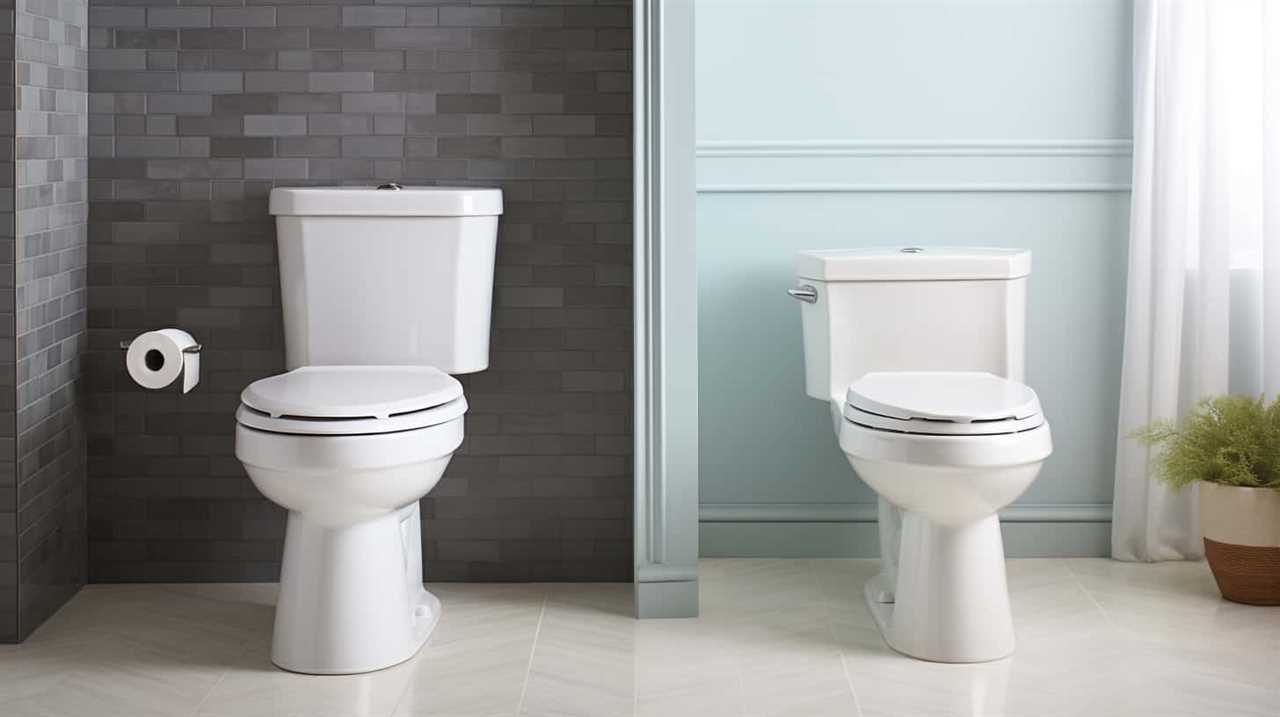As a toilet enthusiast, I must confess that nothing is more satisfying than a powerful and efficient flushing mechanism. It’s like a mini-tornado inside your toilet bowl, whisking away all your worries.
In this article, I will delve into the world of toilet flushing mechanisms, exploring their various types, how they work, common issues, maintenance tips, and even upgrading options.
Get ready to become a master of your porcelain throne!
Key Takeaways
- There are three types of flushing mechanisms: gravity flush, pressure-assisted flush, and dual flush technology.
- Gravity flush mechanisms create a siphon effect, while pressure-assisted flush mechanisms use stored air pressure.
- Common issues with flushing mechanisms include mineral deposit buildup, weak flush, incomplete flush, constant running, and double flushing.
- To maintain flushing mechanisms, regular cleaning, inspecting and replacing parts, testing and adjusting fill valve, and proper maintenance are necessary.
Different Types of Flushing Mechanisms
There are three different types of flushing mechanisms that I find commonly used in toilets.

The first type is the gravity flush mechanism, which relies on the force of gravity to empty the water from the tank into the bowl. This traditional mechanism is simple and reliable, but it can be less efficient in terms of water usage.
The second type is the pressure-assisted flush mechanism, which uses compressed air or water pressure to forcefully push the water into the bowl. This mechanism provides a more powerful flush but can be noisier and more expensive.
The third type is the dual flush technology, which allows users to choose between a full flush for solid waste and a half flush for liquid waste. This water-saving flushing mechanism provides flexibility and helps conserve water.
How Does a Flushing Mechanism Work
To understand how a flushing mechanism works, I’ll explain the process that each of the three types of mechanisms go through to effectively flush the toilet.
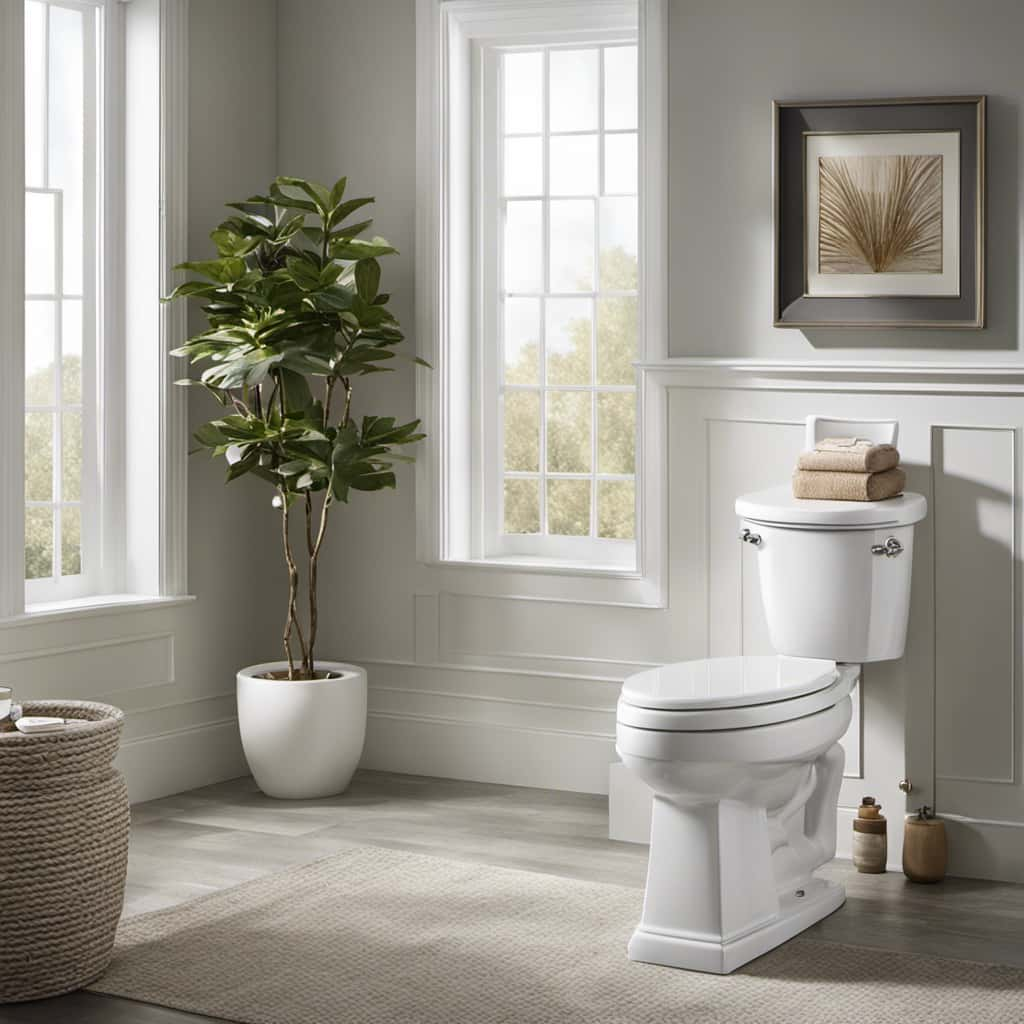
Flushing mechanism innovations have led to efficient water usage and reduced environmental impact. The gravity flush mechanism relies on the force of gravity to empty the tank into the bowl. When the flush lever is pressed, a valve opens, allowing water to flow from the tank into the bowl, creating a siphon effect that removes waste.
The pressure-assist flush mechanism, on the other hand, uses stored air pressure to forcefully push water into the bowl, resulting in a powerful flush.
Common Issues With Flushing Mechanisms
One common issue with flushing mechanisms is the buildup of mineral deposits in the water channels. Over time, minerals such as calcium and magnesium can accumulate in the flushing mechanism, causing reduced water flow and potentially leading to clogs. Troubleshooting flushing issues requires understanding the potential problems and taking appropriate actions to resolve them. To help you troubleshoot these problems, refer to the table below:
| Problem | Possible Cause | Solution |
|---|---|---|
| Weak Flush | Clogged water channels | Use a toilet brush or plunger to remove mineral deposits |
| Incomplete Flush | Faulty flapper valve | Replace the flapper valve |
| Constant Running | Malfunctioning fill valve | Adjust or replace the fill valve |
| Double Flushing | Faulty flush valve or flapper | Check and replace the faulty component |
Tips for Maintaining Your Flushing Mechanism
To maintain an efficient and effective flushing mechanism, I recommend regularly cleaning and inspecting the various components. Here are some tips for proper toilet flushing maintenance and troubleshooting the flushing mechanism:
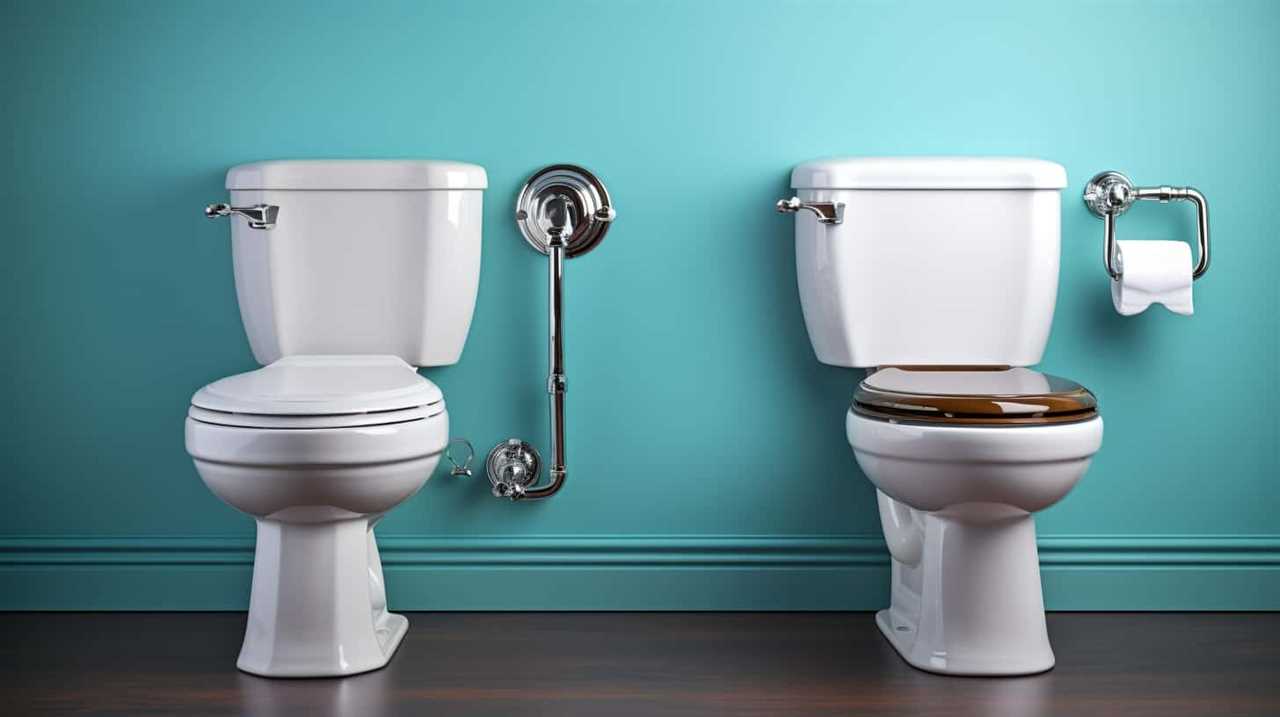
- Clean the toilet tank: Remove the lid and inspect the inside of the tank for any debris or mineral buildup. Use a toilet brush and a mild cleaner to scrub away any deposits.
- Check the flapper valve: The flapper valve is responsible for releasing water into the bowl during flushing. Inspect it for any signs of wear or damage. If necessary, replace it to ensure a tight seal.
- Test the fill valve: The fill valve controls the flow of water into the tank. Check if it’s functioning properly by flushing the toilet and observing the water level. Adjust the fill valve if needed.
- Inspect the flush handle: The flush handle is connected to the flushing mechanism. Ensure it’s securely attached and functioning smoothly. If it feels loose or stiff, consider replacing it for optimal performance.
Upgrading Your Toilet Flushing Mechanism
After properly maintaining your flushing mechanism, it may be beneficial to consider upgrading it for improved performance.
When it comes to toilet flushing efficiency, there are several water-saving options available that can help conserve water and reduce your carbon footprint.
One option is to install a dual flush mechanism, which allows you to choose between a full flush or a half flush depending on the waste volume. This can significantly reduce water usage compared to a traditional single flush mechanism.
Another option is to install a pressure-assisted flushing system, which uses compressed air to force water into the bowl, resulting in a more powerful flush and less water consumption.
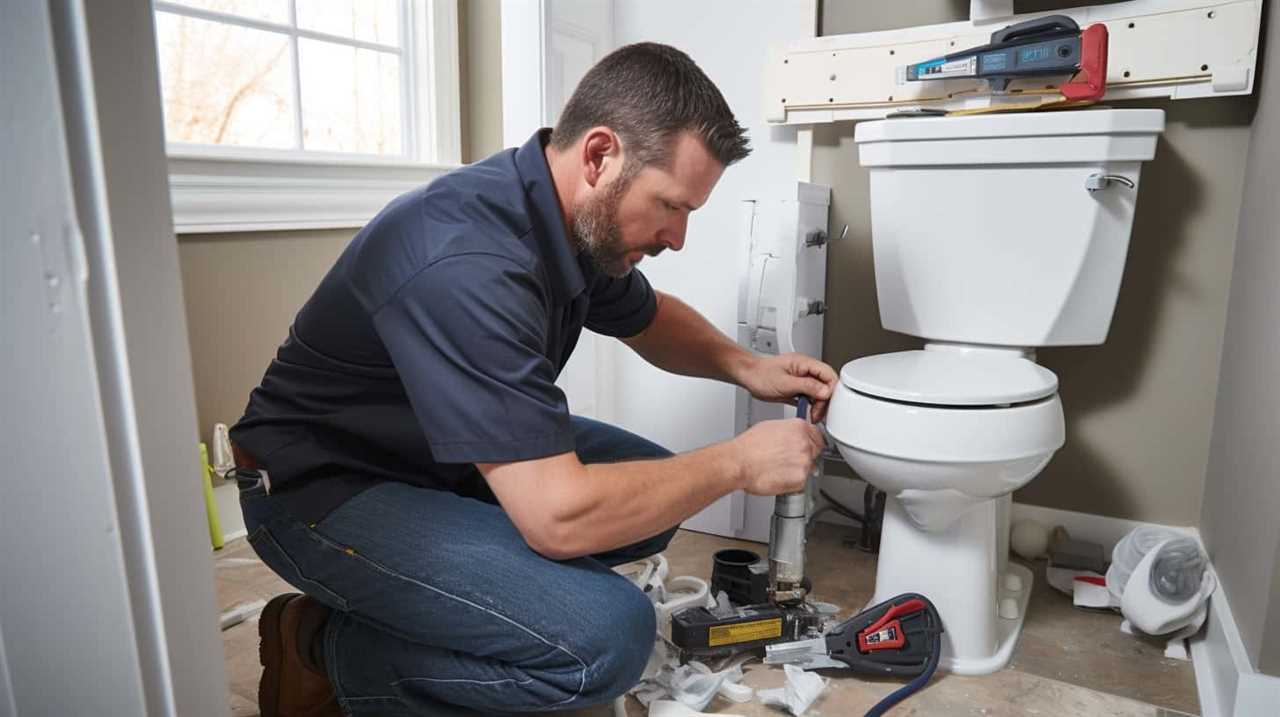
Additionally, upgrading to a high-efficiency toilet (HET) can also greatly improve water savings by using less water per flush while still effectively removing waste.
Frequently Asked Questions
Can I Use Any Type of Flushing Mechanism for My Toilet?
Yes, you can use different types of flushing mechanisms for your toilet. However, it is important to ensure that the flushing mechanism you choose is compatible with your toilet to avoid any issues or malfunctions.
How Often Should I Clean and Maintain My Flushing Mechanism?
Regular cleaning and maintenance of the flushing mechanism is essential for optimal toilet performance. It ensures proper water flow and prevents clogs. Neglecting this important task can lead to costly repairs and inconvenience.
What Are Some Signs That My Flushing Mechanism Needs Repair or Replacement?
If your flushing mechanism is acting up, you may notice signs like weak flush, constant running water, or leaks. Troubleshoot by checking the flapper, fill valve, and flush handle for any issues.
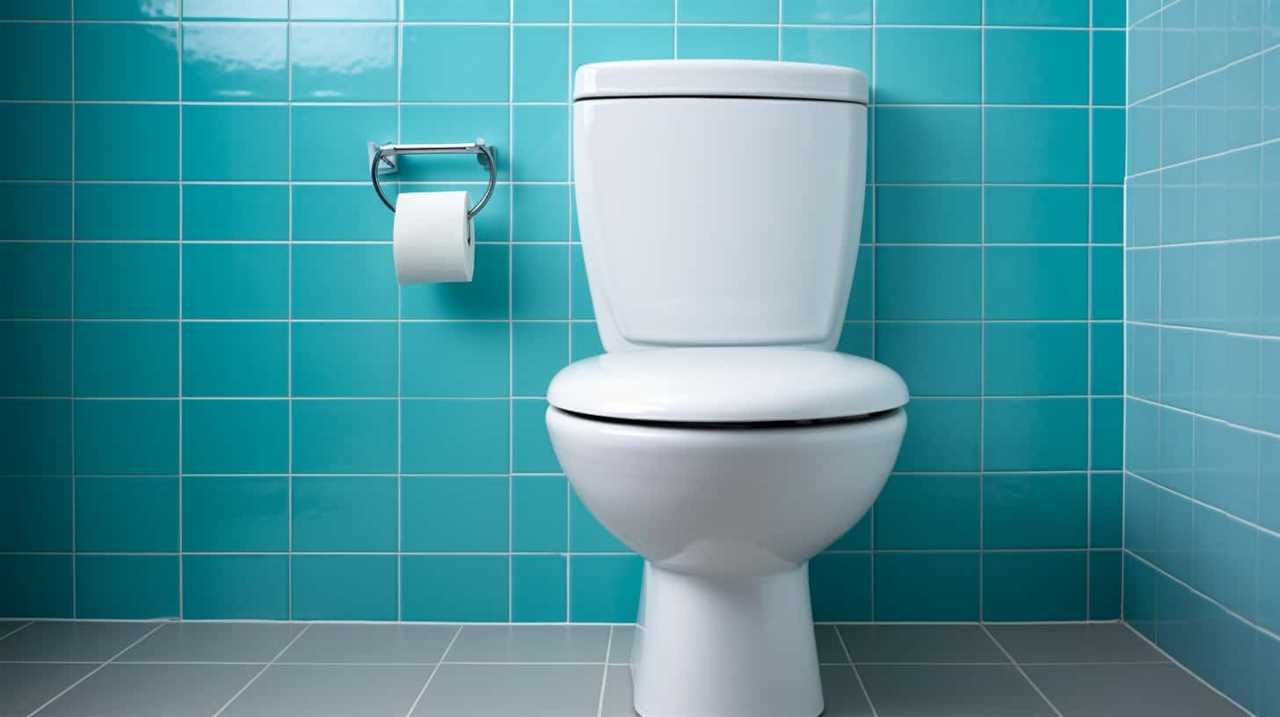
Are There Any Eco-Friendly Flushing Mechanisms Available?
Yes, there are eco-friendly alternatives and water-saving options available for toilet flushing mechanisms. These options help conserve water while still effectively flushing waste, making them a more sustainable choice for the environment.
Can I Install a Dual Flush Mechanism on My Existing Toilet?
Yes, I can install a dual flush mechanism on my existing toilet. The benefits of dual flush include water conservation and cost savings. It is a technical process that requires precision and attention to detail.
Conclusion
In conclusion, it’s essential to understand the inner workings of a toilet flushing mechanism to ensure its proper functioning.
By familiarizing yourself with the different types and how they work, you can troubleshoot common issues and maintain your flushing mechanism effectively.
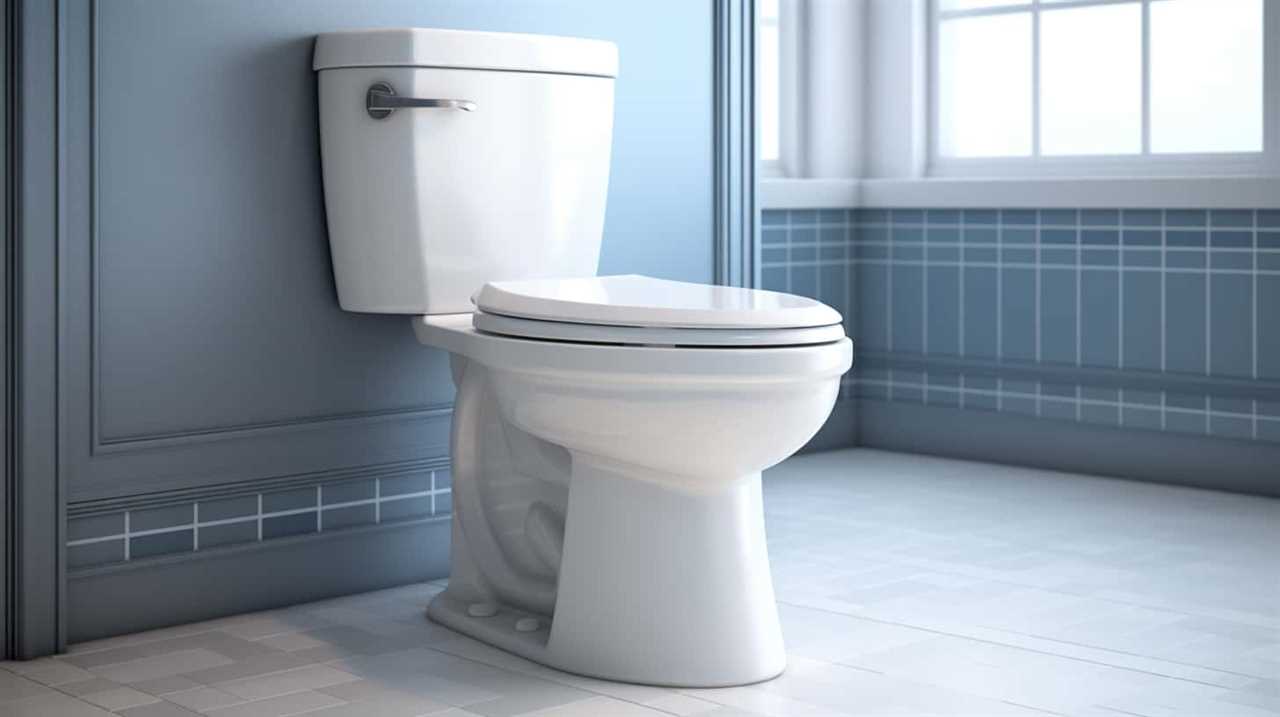
Regular maintenance and upgrading when necessary won’t only extend the life of your toilet but also provide a seamless and efficient flushing experience for years to come.




